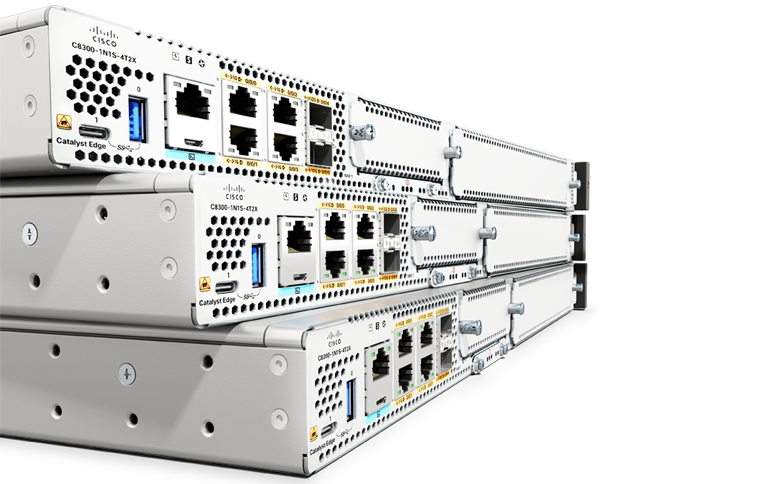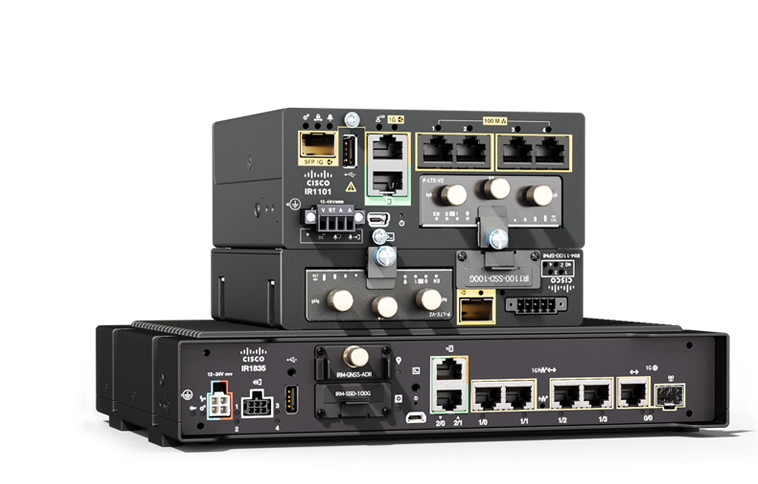Routers - Functions, Types, and Security Features | All About Router
Hey there! Welcome to KnowledgeKnot! Don't forget to share this with your friends and revisit often. Your support motivates us to create more content in the future. Thanks for being awesome!
What is a Router
A router is a crucial networking device that forwards data packets between computer networks. It performs traffic directing functions on the Internet by determining the optimal path for data to travel from the source to the destination. Routers operate at the network layer (Layer 3) of the OSI model, making decisions based on IP addresses.

Example: Consider a home network where multiple devices (like laptops, smartphones, and smart TVs) are connected to the Internet. A router is used to manage the traffic between these devices and the Internet. When a laptop sends a request to visit a website, the router directs this request to the appropriate server on the Internet. Once the server responds, the router ensures that the data is sent back to the laptop, not to any other device in the network.
History of Routers
The concept of routing originated in the early 1960s with the development of the ARPANET, the precursor to the Internet. Early routers were simple devices that connected different networks. The first true router, known as the "Interface Message Processor" (IMP), was developed by BBN Technologies for ARPANET in 1969. The term "router" was coined by a Xerox PARC team led by Robert Metcalfe in 1974. Stanford University developed a pioneering multiprotocol router in 1980. By the mid-1980s, routers became commercial products, with companies like Cisco Systems leading the way. The evolution of routers has been closely tied to the growth and development of the Internet itself.
Router Components
A router typically includes several key components:
→ CPU: The central processing unit handles the routing tasks and executes the router's operating system.
→ Memory: Includes RAM (for running configuration and routing tables) and ROM (for boot firmware and basic OS).
→ Interfaces: Ports for connecting to different networks (Ethernet, WAN, etc.). These can be physical or virtual.
→ Routing Tables: Data tables used to determine the best path for forwarding packets, updated dynamically or statically.
→ Power Supply: Provides the necessary power to the router, often with redundancy in enterprise-grade routers.
→ NVRAM: Non-volatile RAM for storing configuration files.
→ Flash Memory: Stores the router's operating system and other software.
Types of Routers
Routers come in various types, each suited for specific purposes:
→ Wired Routers: Connect directly to devices using cables, offering high-speed and stable connections.
Example: Used in small offices or homes where reliable, high-speed Internet is needed for tasks like video conferencing and streaming.

→ Wireless Routers: Provide connectivity through Wi-Fi, enabling mobile and flexible networking.
Example: Common in homes and public places like cafes and libraries, allowing users to connect multiple devices wirelessly.

→ Core Routers: Operate within the backbone of the network, handling high-volume traffic between other routers.
Example: Used by Internet Service Providers (ISPs) and large enterprises to manage data traffic across their networks.

→ Edge Routers: Manage data at the edge of networks, often serving as the gateway between internal networks and the Internet.
Example: Deployed at the boundary of a corporate network to connect internal users to the Internet while managing traffic and security.

→ Virtual Routers: Software-based routers that can run on virtual machines, offering flexibility and scalability.
Example: Utilized in cloud computing environments where resources need to be dynamically allocated based on demand.
→ Branch Routers: Designed for use in branch offices, connecting remote locations to a central network.
Example: Implemented by businesses with multiple offices, ensuring consistent network performance and security across locations.

→ Industrial Routers: Ruggedized for use in harsh environments, often found in manufacturing or outdoor settings.
Example: Used in industrial automation, transportation systems, and outdoor installations where durability and reliability are critical.

Working of a Router
Routers receive incoming data packets, examine the destination address, consult their routing table to determine the best path, and forward the packet to the next device along that path. This process involves:
→ Packet Receiving: Accepting data packets from connected devices or other routers.
→ Packet Decoding: Analyzing the packet's header to extract the destination IP address.
→ Route Determination: Using routing tables and algorithms to find the optimal path to the destination.
→ Packet Forwarding: Sending the packet to the next hop in the path, which could be another router or the final destination.
→ TTL Decrementing: Decreasing the Time To Live (TTL) value in the IP header to prevent endless looping.
→ Fragmentation: Breaking down large packets if necessary to accommodate different network MTU sizes.
Routing Protocols
Routing protocols help routers automatically find the best way to send data. They let routers share information about the network's layout and conditions. Common routing protocols include:
→ RIP (Routing Information Protocol): Uses hop count to choose the best path. It operates on a distance-vector algorithm, where each router shares its routing table with its immediate neighbors at regular intervals. The hop count (number of routers a packet must pass through) is used to determine the best path, with a limit of 15 hops to prevent loops. It’s simple but not ideal for big networks.
Example: RIP is suitable for small offices or home networks with limited devices, where network topology rarely changes. For example, a small business connecting a few branches over a simple network might use RIP due to its ease of configuration.
→ OSPF (Open Shortest Path First): Chooses routes based on the condition of network links. It uses a link-state algorithm, where each router creates a database of the network topology by sharing updates about its connections (links) with all other routers in the network. Using this data, routers calculate the shortest path using Dijkstra’s algorithm. This makes OSPF efficient for large and dynamic networks.
Example: OSPF is commonly deployed in enterprise networks, such as a multinational corporation connecting multiple data centers and branch offices. Its ability to quickly adapt to link failures makes it a preferred choice for environments with high reliability requirements.
→ BGP (Border Gateway Protocol): Manages how data is routed across the Internet, making it critical for ISPs. It is a path-vector protocol that enables routers to exchange information about available paths between different autonomous systems (large networks managed by one organization). BGP evaluates factors like path length, policies, and preferences to choose the best route.
Example: BGP is used by large ISPs, cloud service providers, and content delivery networks (CDNs). For instance, companies like Google or Amazon rely on BGP to exchange routing information with other networks to ensure efficient and reliable delivery of Internet traffic globally.
→ EIGRP (Enhanced Interior Gateway Routing Protocol): Combines the benefits of link-state and distance-vector routing techniques and is Cisco-specific. It calculates the best route using metrics like bandwidth, delay, load, and reliability. Unlike RIP, EIGRP only sends updates when network changes occur and communicates detailed route information to optimize decisions. This ensures faster convergence and better efficiency.
Example: EIGRP is ideal for Cisco-based enterprise networks that require high-speed convergence and efficient routing. For example, a university campus network using Cisco devices can benefit from EIGRP to manage the large number of routers and switches distributed across departments.
→ IS-IS (Intermediate System to Intermediate System): Similar to OSPF but operates at the OSI model’s network layer. It uses a link-state protocol where routers exchange updates about the state of links. Each router builds a complete topology map of the network to make efficient routing decisions. IS-IS is often preferred in large service provider networks due to its scalability.
Example: IS-IS is widely used by ISPs and telecom providers. For instance, a large ISP managing extensive fiber-optic networks across multiple regions might use IS-IS to maintain reliable connectivity and handle heavy traffic loads efficiently.
→ Static Routing: Routes are set manually by the administrator. In this approach, the administrator specifies which paths data should take, and the routes do not adapt to changes automatically. Static routing is ideal for predictable traffic between fixed endpoints, but manual updates are required if the network changes.
Example: Static routing is commonly used in small-scale networks like home setups. For example, if you have a home office with a router connected directly to a specific server, you might configure a static route to ensure consistent access to that server without relying on dynamic routing protocols.
Security Features of Routers
Modern routers come equipped with various security features to protect network integrity:
→ Firewall: Filters incoming and outgoing traffic to block unauthorized access, often using stateful packet inspection.
→ VPN Support: Allows secure remote access to the network, creating encrypted tunnels over public networks.
→ Access Control Lists (ACLs): Define rules for packet filtering based on IP addresses, protocols, and ports.
→ Intrusion Detection/Prevention Systems (IDS/IPS): Monitor network traffic for suspicious activity and can actively block threats.
→ Encryption: Secures data transmission over the network, often implementing protocols like SSL/TLS.
→ NAT (Network Address Translation): Hides internal IP addresses, adding a layer of security.
→ DMZ (Demilitarized Zone): Creates a separate network segment for publicly accessible services.
→ 802.1X Authentication: Provides port-based access control for enhanced network security.






